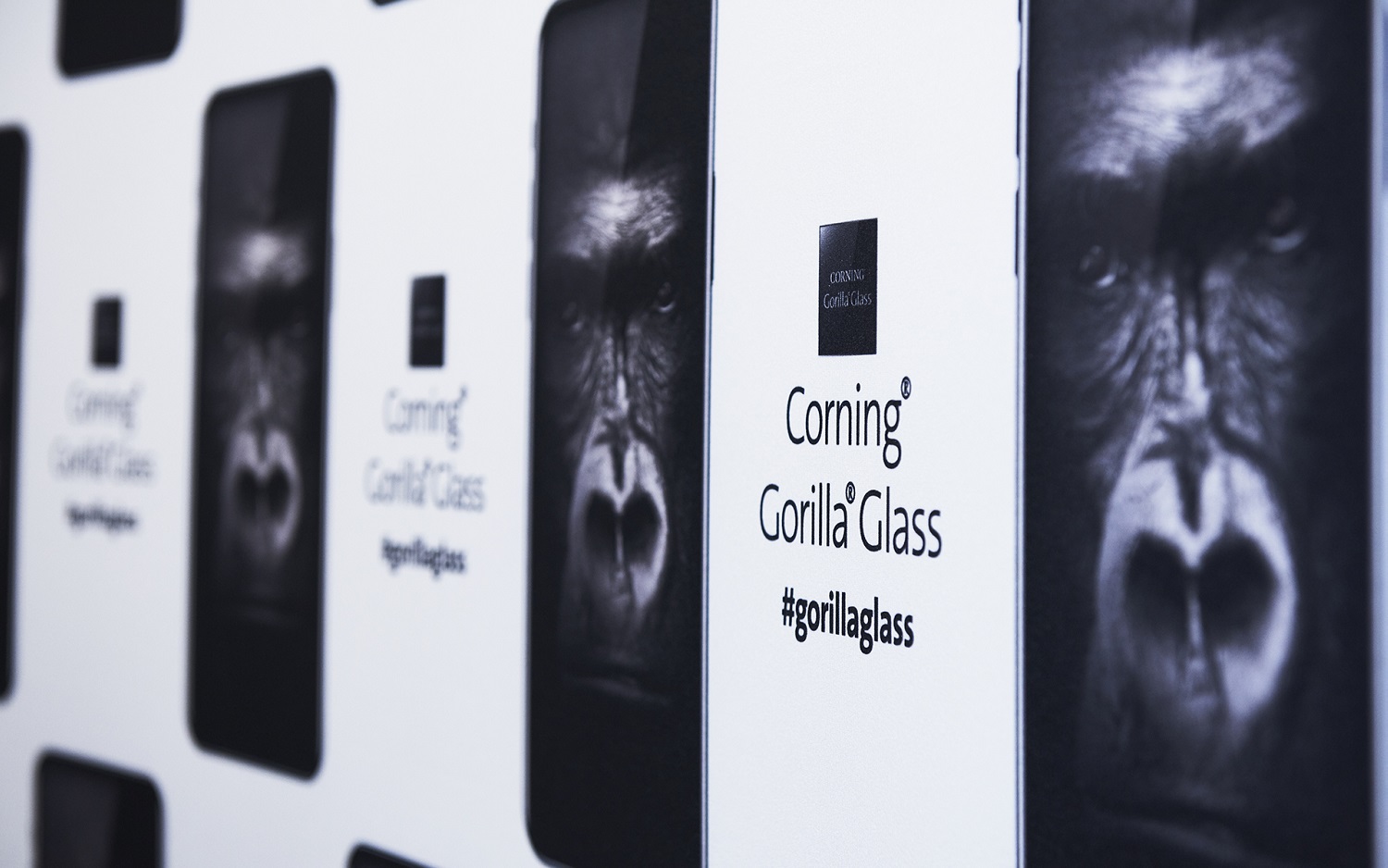Gorilla Glass 6 Is Ready for Your Device to Drop 15 Times
Corning knows that accidents happen. Clumsy people lose their grips on their devices, tablets fall out of tourists' hands when photographing Times Square and phones slip out of pockets. That's why the company introduced the latest iteration of its ubiquitous glass, Gorilla Glass 6, with the promise of protecting devices from multiple drops.
The firm originally developed Gorilla Glass in 2007 for use in the first iPhone. Now, it's used in more than 6 billion laptops, tablets, smartphones and other devices, according to figures Corning shared in its announcement. Glass is found in pretty much every modern tech product--displays rely on it, of course, and companies like Apple have shown a fondness towards using glass for a phone's entire body (see: iPhone 4, iPhone X).
Corning has made Gorilla Glass increasingly resilient as it's perfected the creation process. The company has also worked to make its glass more flexible, which makes it less prone to shattering, and thinner so manufacturers can reduce the weight of their products. People have probably also gotten less careful with their devices--2007's novelty is 2018's status quo--which means products have to withstand more strenuous use.
This is where Gorilla Glass 6 comes in. Corning explained in a statement accompanying its announcement:
“As consumers become more dependent on their smartphones, the opportunity for potentially damaging drops is also on the rise. Now more than ever, it’s critical the cover glass provides outstanding protection,” said John Bayne, vice president and general manager, Corning Gorilla Glass. “Corning Gorilla Glass 6 improves upon Gorilla Glass 5 by surviving drops from higher heights, but, more importantly, has been engineered to survive multiple drops.”
The company also cited a report from survey maker Toluna claiming the average person drops their phone 7 times a year. Roughly half are from 1 meter or lower, so Corning designed Gorilla Glass 6 to survive as many drops from 1m onto rough surfaces as possible. Gorilla Glass 6 is said to have survived 15 such drops, making it "up to two times better" than its predecessor. Corning said competing forms of glass didn't make it through a single drop.
Corning has multiple customers evaluating Gorilla Glass 6 right now, and if things go well, it should reach the market in "the next several months," it said. Considering that it was made to be more durable specifically because Corning knows smartphone manufacturers want to build as much as 85 percent of their phones' chassis from glass, odds are good that you'll be able to see the difference for yourself sooner rather than later.
Get Tom's Hardware's best news and in-depth reviews, straight to your inbox.

Nathaniel Mott is a freelance news and features writer for Tom's Hardware US, covering breaking news, security, and the silliest aspects of the tech industry.
-
razor512 What needs to be looked into, is how has that impacted the scratch resistance?Reply
With gorilla glass 5, it became a little less scratch resistant. -
therealduckofdeath Stop viewing paid click-baiting youtube trolls like that Rigs Everything guy. That deliberate fake "test" of the Note 7, which is still referred to regarding Gorilla Glass 5, was redacted by him as it was so obviously faked.Reply -
AgentLozen My Samsung Galaxy S8 has all kinds of little scratches in its screen. I'm sure my Galaxy Gear HMD is useless consequently. I haven't put my phone into that thing in over a year though.Reply -
anbello262 When GG5 was announced, even the company itself and tomshardware said that it would heve less scratch resistance, so it has nothing to do with a random YouTube video.Reply
It's quite related to material science: the easiest way to make something shatter less (tougher) is to make it softer (and therefore easier to scratch). There are multiple mechanisms in action, though, so it's not that simple, of course.
I would like to see a direct answer from the company about scratch resistance. -
hotaru251 just wish they'd work on a sapphire screen as its much tougher than glass will ever be :/Reply -
therealduckofdeath Reply21156742 said:When GG5 was announced, even the company itself and tomshardware said that it would heve less scratch resistance, so it has nothing to do with a random YouTube video.
Here are the actual words Corning used: "The glass is designed to improve the drop performance and not necessarily designed to improve the scratch performance. When we consider all hardness tests, GG5 is actually harder than GG4. Based on our testing, for scratch performance as well as the hardness testing we do that’s widely used in the industry, we believe that GG5 should be performing similarly to GG4."
The glass type is extremely similar. Even on a chemical level. It's not like they replaced it with plastic. What you're expressing is the typical internet disease called confirmation bias. You want to believe that everybody says something and start taking that for a fact. -
JamesSneed Reply21157358 said:just wish they'd work on a sapphire screen as its much tougher than glass will ever be :/
I'm not sure sapphire is "tougher". It certainly is harder to scratch but in that same vein a sapphire screen should also shatter a lot easier. -
WyomingKnott 15 times? Is there a hex counter and on the 16th it shatters? Or is that just random ad-speak?Reply
